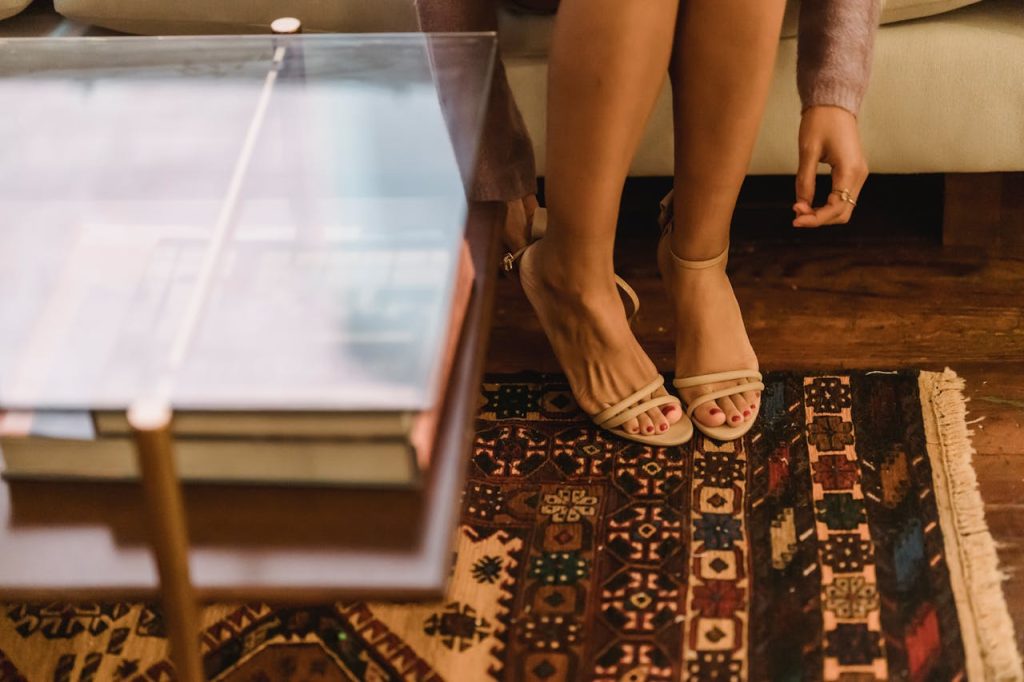What Are Heel Spurs?
Heel Spurs and Plantar Fasciitis go hand-in-hand (pun intended!). Plantar Fasciitis is a condition that causes inflammation across the bottom of the foot, especially the heel. About 70 percent of patients with plantar fasciitis who have discomfort or heel pain will also be found to have a heel spur when observed via X-ray. Heel spurs are commonly associated with plantar fasciitis and are identified when there is point tenderness at the bottom of the heel. While some people can go through life with heel spurs and never know about them, others can experience significant pain that can make every step harder than the last. Heel spurs are bony growths on the bottom of the heel that are directed toward the arch of your foot. Although they rarely cause pain on their own, bone spurs in the feet can lead to callus formation as tissue builds up to provide an added cushion over the area of stress. Heel spurs occur when calcium deposits build up on the underside of the heel bone, a process that usually occurs over a period of many months.
“An even better option is to have custom orthotics, molded shoe inserts, made that will slip into your shoe.”
How can you treat heel spurs?
Heel spurs are often caused by strains on foot muscles and ligaments, stretching of the plantar fascia, and repeated tearing of the membrane that covers the heel bone. Bone spurs rarely require treatment unless they are causing frequent heel pain or damaging other tissues.
Some treatments options that can help you find heel relief are cold compresses, special shoes, custom orthotics, and OTC medication. Cold therapy can help to relieve inflamed heel tissue. This includes applying a cloth-covered ice pack to your heel and rolling your foot over a cold or frozen water bottle. Comfortable and well-fitting shoes can also reduce the amount of pressure on the heel spur. This pressure can cause heel pain and discomfort so finding shoes with firm heel support, moderate flexibility, and a slightly elevated heel are the best at tackling that issue. You can prevent heel spurs by wearing well-fitted shoes with shock-absorbent soles, rigid shanks, and supportive heel counters. An even better option is to have custom orthotics, molded shoe inserts, made that will slip into your shoe. These orthotics are custom-designed to provide extra heel support and can prevent heel spurs with specially designed and constructed shoes specifically for your foot. Over-the-counter anti-inflammatory medications can help you also relieve heel pain and discomfort.
Non-surgical treatments like stretching really help to reduce strain and pressure on the heel spur. Foot flexes and calf stretches can go a long way in helping you to reduce heel spur pain. Home remedies that could work for you are exercising and taking natural anti-inflammatories. If you think your pain is exercise-related, change your exercise routine, environment, or footwear, and emphasize movements and body parts that do not cause pain. Ginger and turmeric are natural anti-inflammatories with fewer side effects than over-the-counter pain relievers.
Need Personalized Help for Heel Spurs?
The Shoe Doctor has specialized in providing custom orthotics for 20 years. The right insole can greatly reduce foot, knee and hip pains. Russell at The Shoe Doctor will help educate and assist you in finding the perfect solution for your particular situation. We will create a 3D map of your feet and make a custom orthotics for your shoes. These orthotics along with our expert advice will get you back to being able to walk peacefully. Our sole (ha ha!) purpose is to reduce your pain and make you comfortable again. If you are in the San Francisco Bay Area, give The Shoe Doctor a call to get the best custom orthotics in the area! We are here to assist you, give us a call at (925) 820-0220 (here is a map to our location) for your free consultation!
“Our sole (ha ha!) purpose is to reduce your pain and make you comfortable again. Call The Shoe Doctor for an appointment today!”
Sources:
- https://www.webmd.com/pain-management/heel-spurs-pain-causes-symptoms-treatments#1
- https://www.healthline.com/health/heel-spur-treatment
- https://www.drweil.com/health-wellness/body-mind-spirit/feet/treating-heel-spurs/
- https://www.emedicinehealth.com/plantar_fasciitis_health/article_em.htm#what_are_treatments_and_home_remedies_for_heel_spurs
- https://www.medicinenet.com/heel_spurs/article.htm#what_are_heel_spur_treatment_options_are_there_any_home_remedies_for_heel_spurs


